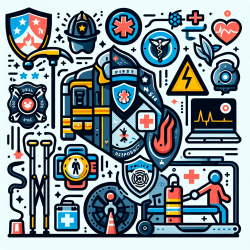Introduction
As a speech-language pathologist dedicated to enhancing children's outcomes, understanding the impact of urban environments on child rights is crucial. The research article titled “In small places, close to home”: Urban environmental impacts on child rights across four global cities provides a wealth of data-driven insights into how urban settings influence child development and rights. This blog will explore how practitioners can leverage these findings to improve their skills and advocate for better urban planning that supports children's rights.
Understanding the Impact of Urban Environments
The study examines four diverse cities: Accra, Delhi, London, and Vancouver, focusing on how urban characteristics affect children's rights as outlined in the UN Convention on the Rights of the Child (UNCRC). The research highlights the disparities in children's exposure to environmental risks and amenities, emphasizing the role of car-based transportation systems and rapid urbanization in these inequalities.
Key Findings and Their Implications
- Car-Based Transportation Systems: The study reveals that car-centric urban planning limits children's access to safe play spaces and increases exposure to pollution and traffic hazards. Practitioners can advocate for pedestrian-friendly infrastructure to enhance children's safety and mobility.
- Urbanization and Climate Change: Rapid urban growth and climate change exacerbate risks such as air pollution and inadequate green spaces. Speech-language pathologists can collaborate with urban planners to design environments that promote healthy child development.
- Socio-Demographic Disparities: Children from marginalized communities face greater environmental risks. Practitioners should focus on equitable access to resources and advocate for policies that address these disparities.
Actionable Steps for Practitioners
To leverage these insights, practitioners can:
- Engage in interdisciplinary collaborations with urban planners, educators, and policymakers to design child-friendly urban spaces.
- Advocate for policies that prioritize children's rights in urban planning, ensuring access to clean air, safe play areas, and green spaces.
- Conduct further research to explore the specific impacts of urban environments on speech and language development in children.
Conclusion
By understanding the complex interactions between urban environments and child rights, practitioners can play a pivotal role in advocating for healthier, more equitable cities. The insights from this research provide a foundation for data-driven advocacy and collaboration across sectors.
To read the original research paper, please follow this link: “In small places, close to home”: Urban environmental impacts on child rights across four global cities.










